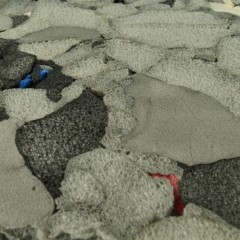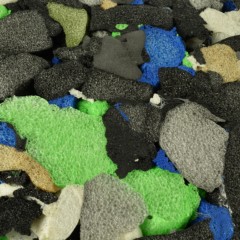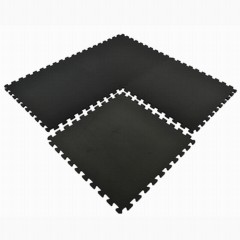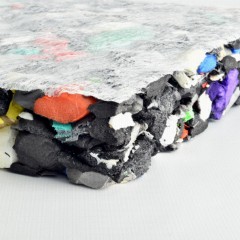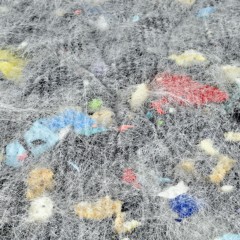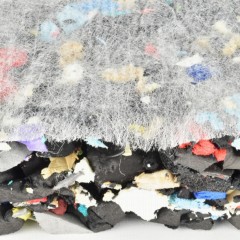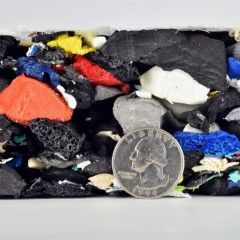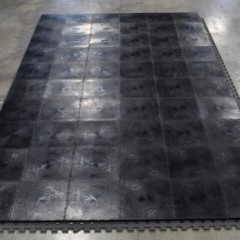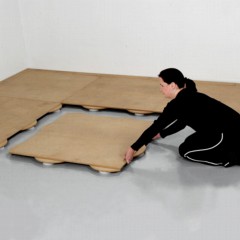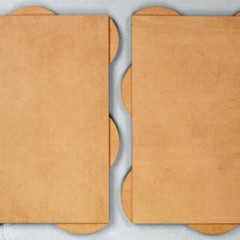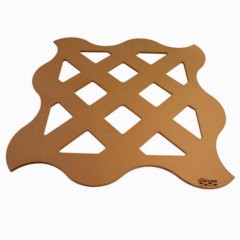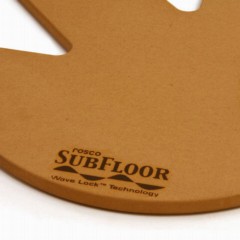When preparing for a floor layout installation, it may be helpful to create an extra layer of cushioning underneath the main flooring. For this use case, Greatmats offers many foam underlay products that are durable and have excellent cushioning.
We offer rolls of padding, interlocking padded tiles, and large foam pads that work well as an underlayment. Some of our products are even usable outdoors, creating cushioning in areas where children may trip while running or playing.
Size and Shape Options
We offer foam underlay products in a range of sizes and shapes. Customers often select a large roll of foam to cover a large space. Interlocking foam tiles can be easier to handle and install when used in a small space, though.
With foam tiles, we have a
2x2 foot product. Because foam is so lightweight, large tiles are easy to move into place for the installation, even if one person is doing the work alone.
Rolls of foam underlay are also highly popular for this use case, thanks to the lightweight nature of the foam. Understand that our typical roll size carries a measurement of 6x42 feet. Because of its large square footage, it can weigh as much as 95 pounds. Customers may need two people to help with the installation.
Various thickness options are available, typically ranging from about 3/8 inches to 2 inches. Thicker foam will create a greater level of cushioning than thinner foam. You may even receive a fall height rating with some of the thicker materials, which is ideal for use at a playground with tall equipment.
Material Options
Not all models of our foam are the same. Select a foam material that matches the use case you have planned for the foam underlay.
Polyethylene foam is a good choice when you want a type of foam that is extremely cushioned. This is a cross-linked foam that compresses quickly when placed under weight, absorbing the force. It then rebounds to its original shape and size just as quickly.
Some of our
interlocking tiles use EVA foam, which has quite a bit of firmness. It works well underneath the dance floor, as it has a little bit of cushioning to protect the lower leg joints of dancers while creating stability for dancers and athletes.
Pattern and Texture Options
When deploying a foam underlay, textures, patterns, and colors typically aren’t going to be all that important to customers. However, if you need a certain color of underlay, we offer multiple options.
For our interlocking foam tiles, a solid black tile with no pattern or texture is the most common option.
We also offer
thick foam tiles that make use of multiple chunks and multiple colors of foam, molded together. This will result in a random pattern in the foam flooring.
With some foam pads made to serve as
sprung dance floors, the foam pads go underneath a thin wood frame, creating a bounce.
Our roll of foam underlay has a solid black color.
Common Use Options
Using foam padding as underlayment is a good idea in areas where athletes and dancers will be doing workouts. A martial arts studio may use the foam to create additional cushioning when practicing throws.
A cheer studio or a gymnastics studio can use thick foam to create a greater level of safety for the athletes as they work on their skills and run the risk of falling.
For a playground at home, a park, a school, or a church, foam underlayment protects kids if they fall from the equipment or if they trip and fall. Many people will place a roll of artificial grass or turf over the top of the foam, as the foam underlayments don’t work as primary flooring on which people can walk.
Installation Options
Installing foam underneath the main flooring is an easy process.
When laying out tiles of foam, use the interlocking edges on the tiles to keep them connected without the need for adhesive. If the foam tiles do not have locking edges, you may want to glue them to the concrete or other subflooring material to hold the layout together.
With the rolls of foam, you should not need to use glue or adhesive, although you can. When placing the main flooring over the top of the roll of foam, the weight of the entire layout should hold everything in place.
Cleaning and Maintenance Requirements
Because these foam products used as an underlayment do not work as a finished surface, customers always need to place another type of flooring material over top. This main flooring material should protect the foam from accumulating a significant amount of dirt or other unwanted materials.
Consequently, you should not need to clean the foam material very often.
If you are using a dry lay installation of the foam and if you plan to pick it up and place it in storage, you should gently sweep it or shake out the foam to remove any stray dry debris before storing it.





